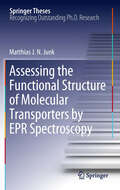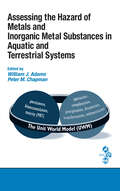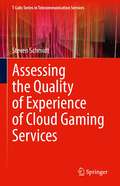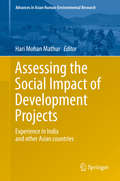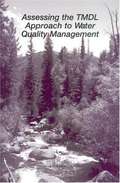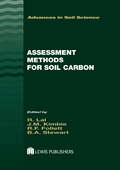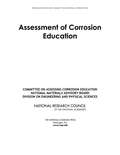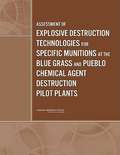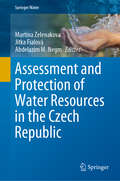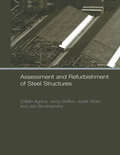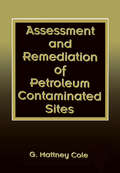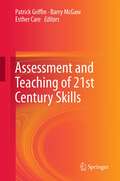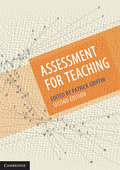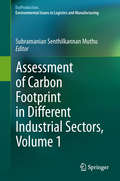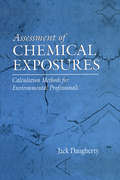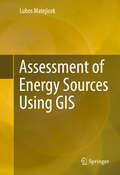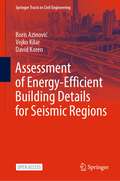- Table View
- List View
Assessing the Functional Structure of Molecular Transporters by EPR Spectroscopy (Springer Theses)
by Matthias J.N.JunkIn his thesis, Matthias Junk takes an innovative approach to assess the local structure and dynamics of biological and synthetic amphiphilic macromolecules capable of transporting small molecules. Replacing the latter with stable radicals, he uses state-of-the-art electron paramagnetic resonance (EPR) spectroscopy to describe the highly relevant transport function from the viewpoint of the guest molecules. Such, he demonstrates that the functional structure of human serum albumin in solution significantly differs from its crystal structure - a consequence of the protein's adaptability to host various endogenous compounds and drug molecules. Further, he shows that the thermal collapse of thermoresponsive hydrogels and dendronized polymers leads to static and dynamic heterogeneities on the nanoscale. These heterogeneities bear consequences for the material's hosting properties and enable unforeseen complex catalytic functionalities.
Assessing the Hazard of Metals and Inorganic Metal Substances in Aquatic and Terrestrial Systems
by William J. Adams Peter M. ChapmanCurrent procedures used for hazard identification and classification are based on persistence, bioaccumulation, and toxicity measurements. Assessing the Hazard of Metals and Inorganic Metal Substances in Aquatic and Terrestrial Systems provides the basis for improvements to the current model for hazard assessment. The book reviews the scientific un
Assessing the Implications of Allowing Transgender Personnel to Serve Openly
by Agnes Gereben Schaefer Jennifer Kavanagh Kayla M. Williams Srikanth Kadiyala Radha Iyengar Amii M. Kress Charles C. EngelThe U.S. Department of Defense is considering a change in policy to allow transgender military personnel to serve openly. A RAND study examined the health care needs of transgender personnel, the costs of gender transition-related care, and the potential readiness implications of a policy change. The experiences of foreign militaries that permit transgender service members to serve openly also point to some best practices for U.S. policymakers.
Assessing the Quality of Experience of Cloud Gaming Services (T-Labs Series in Telecommunication Services)
by Steven SchmidtThis book provides an overview of concepts and challenges in intis investigated using structural equation modeling. The conveyed understanding of gaming QoE, empirical eraction quality in the domain of cloud gaming services. The author presents a unified evaluation approach by combining quantitative subjective assessment methods in a concise way. The author discusses a measurement tool, Gaming Input Quality Scale (GIPS), that assesses the interaction quality of such a service available. Furthermore, the author discusses a new framework to assess gaming Quality of Experience (QoE) using a crowdsourcing approach. Lastly, based on a large dataset including dominant network and encoding conditions, the evaluation method is investigated using structural equation modeling. The conveyed understanding of gaming QoE, empirical findings, and models presented in this book should be of particular interest to researchers working in the fields of quality and usability engineering, as well as service providers and network operators.
Assessing the Social Impact of Development Projects: Experience in India and Other Asian Countries (Advances in Asian Human-Environmental Research)
by Hari Mohan MathurThis book shows how social impact assessment (SIA), which emerged barely five decades ago, as a way to anticipate and manage potentially negative social impacts of building dams, power stations, urban infrastructure, highways, industries, mining and other development projects, is now widely in use as a planning tool, especially in developed countries. Although SIA has still not gained much acceptance among development planners in Asia, the situation is gradually changing. In India, SIA initially mandated as a policy guideline in 2007 is now a legal requirement. SIA in China has also recently become obligatory for certain types of development projects. Bangladesh, Laos, Nepal, Pakistan and Sri Lanka are other Asian countries that provide examples from a variety of externally funded projects illustrating the use of social impact analysis in project planning to improve development outcomes. With contributions from an array of leading experts, this book is a valuable resource on SIA, indispensable for policymakers, planners, and practitioners in government, international development agencies, private-sector industry, private banks, consultants, teachers, researchers and students of social sciences and development studies, also NGOs everywhere, not in Asia alone.
Assessing the TMDL Approach to Water Quality Management
by Committee to Assess the Scientific Basis of the Total Maximum Daily Load Approach to Water Pollution ReductionMany of the questions about the approachinitiated in the 1972 Clean Water Act, and now the basis for efforts to meet state water quality standards in the USpivot on the ambitious timetable for meeting quality standards and non-point source controls, but underlying specific questions is the issue of whether it is supported by sufficient science. The committee recommends incorporating elements of adaptive implementation into the guidelines and regulations. No index is provided. Annotation c. Book News, Inc. , Portland, OR (booknews. com)
Assessing the Tradecraft of Intelligence Analysis
by Gregory F. Treverton C. Bryan GabbardThis report assesses intelligence analysis across the main U.S. intelligence agencies and makes a number of recommendations, some of which parallel initiatives that have begun in the wake of the December 2004 legislation, for instance, create a Deputy Director of National Intelligence as a focal point for analysis, establish a National Intelligence University, build a Long Term Analysis Unit at the National Intelligence Council, and form an Open Source Center for making more creative use of open-source materials.
Assessing, Mapping and Modelling of Mangrove Ecosystem Services in the Asia-Pacific Region (Science for Sustainable Societies)
by Rajarshi Dasgupta Osamu Saito Shizuka HashimotoThis book presents the state-of-the-art of knowledge in assessing, mapping, and modeling mangrove ecosystem services and outlines various scientific tools and techniques, including environmental scenario-building, spatial and econometric modelling to understand the fluctuations and future availability of mangrove ecosystem services. The book also highlights the current gaps and measures in policy planning and outlines the avenues for capacity building. Through case studies and thematic reviews, the book plans to cater to a wide range of audiences, including students, researchers, and decision-makers at various levels involved in mangrove conservation and land use optimization for sustainable and resilient development. This book is particularly useful to researchers and students in the field of landscape and spatial ecology, coastal zone management, ecosystem services, and resilience planning. It is also a must-read for policymakers, conservators, coastal zone managers, foresters, and general administrators in understanding the current and future roles of mangroves in ecosystem-based adaptation through informed decision-making.
Assessment for Teaching
by Patrick GriffinAssessment for Teaching is a comprehensive and practical introduction to assessment and learning in primary and secondary school settings. This book treats assessment as a source of data that informs teaching strategies. It replaces a deficit model of assessment with a development model: a framework which recognises the importance of identifying what the student is ready to learn. The book also promotes collaboration between teachers in professional learning teams - encouraging the sharing of assessment data and team-based interpretation - to improve student outcomes and to plan goals for students based on a development scale. Each chapter contains: - an exercise for applying the course content to classroom practice - a response template for the exercise - guidelines on assessing the value of the exercise in a professional learning team - a short test for participants to cross-check their understanding of the course content This is an essential resource for both pre-service and in-service teachers.
Assessment Methods for Soil Carbon
by B. A. Stewart R. Lal J. M. Kimble R. F. FollettSince carbon sequestration in soils reduces the amount of carbon available to the atmosphere, the Kyoto Protocols have heightened interest in soil carbon pools and their effect on carbon fluxes. Assessment Methods for Soil Carbon addresses many of the questions related to the measurement, monitoring, and verification of organic and inorganic carbon
Assessment Of Corrosion Education
by National Research Council of the National AcademiesThe threat from the degradation of materials in the engineered products that drive our economy, keep our citizenry healthy, and keep us safe from terrorism and belligerent threats has been well documented over the years. And yet little effort appears to have been made to apply the nation's engineering community to developing a better understanding of corrosion and the mitigation of its effects. The engineering workforce must have a solid understanding of the physical and chemical bases of corrosion, as well as an understanding of the engineering issues surrounding corrosion and corrosion abatement. Nonetheless, corrosion engineering is not a required course in the curriculum of most bachelor degree programs in MSE and related engineering fields, and in many programs, the subject is not even available. As a result, most bachelor-level graduates of materials- and design-related programs have an inadequate background in corrosion engineering principles and practices. To combat this problem, the book makes a number of short- and long-term recommendations to industry and government agencies, educational institutions, and communities to increase education and awareness, and ultimately give the incoming workforce the knowledge they need.
Assessment Of Explosive Destruction Technologies For Specific Munitions At The Blue Grass And Pueblo Chemical Agent Destruction Pilot Plants
by National Research Council of the National AcademiesThe Army's ability to meet public and congressional demands to destroy expeditiously all of the U.S. declared chemical weapons would be enhanced by the selection and acquisition of appropriate explosive destruction technologies (EDTs) to augment the main technologies to be used to destroy the chemical weapons currently at the Blue Grass Army Depot (BGAD) in Kentucky and the Pueblo Chemical Depot (PCD) in Colorado. The Army is considering four EDTs for the destruction of chemical weapons: three from private sector vendors, and a fourth, Army-developed explosive destruction system (EDS). This book updates earlier evaluations of these technologies, as well as any other viable detonation technologies, based on several considerations including process maturity, process efficacy, process throughput, process safety, public and regulatory acceptability, and secondary waste issues, among others. It also provides detailed information on each of the requirements at BGAD and PCD and rates each of the existing suitable EDTs plus the Army's EDS with respect to how well it satisfies these requirements.
Assessment Of Wingtip Modifications To Increase The Fuel Efficiency Of Air Force Aircraft
by National Research Council of the National AcademiesThe high cost of aviation fuel has resulted in increased attention by Congress and the Air Force on improving military aircraft fuel efficiency. One action considered is modification of the aircraft’s wingtip by installing, for example, winglets to reduce drag. While common on commercial aircraft, such modifications have been less so on military aircraft. In an attempt to encourage greater Air Force use in this area, Congress, in H. Rept. 109-452, directed the Air Force to provide a report examining the feasibility of modifying its aircraft with winglets. To assist in this effort, the Air Force asked the NRC to evaluate its aircraft inventory and identify those aircraft that may be good candidates for winglet modifications. This report—which considers other wingtip modifications in addition to winglets—presents a review of wingtip modifications; an examination of previous analyses and experience with such modifications; and an assessment of wingtip modifications for various Air Force aircraft and potential investment strategies.
Assessment and Protection of Water Resources in the Czech Republic (Springer Water)
by Abdelazim M. Negm Martina Zelenakova Jitka FialováThis book gathers technical and scientific contributions from leading researchers, academics, and lecturers, focusing on water management, water pollution and water structures in the Czech Republic. It discusses a variety of water resources management issues, from stormwater management in urban areas, water quantity, hydraulics structures and hydrodynamic modeling, to flood protection, presenting state-of-the-art developments for addressing a range of problems. Edited and authored by pioneers in the field who have been at the cutting edge of water management development in the Czech Republic, this book is of interest to environmental professionals, including scientists and policymakers both in the Czech Republic and around the globe.
Assessment and Refurbishment of Steel Structures
by Zoltan Agocs Jan Brodniansky Josef Vican Jerzy ZiolkoThe material properties, spatial configuration and variation in the construction of steel structures means they often have the potential for reconstruction. This book provides civil engineers with the necessary information to approach projects of reconstruction and reinforcement of steel structures such as buildings, masts, towers, chimneys, storag
Assessment and Remediation of Petroleum Contaminated Sites
by G. Mattney ColeFederal regulations have required thousands of underground storage tanks (USTs) to be dug up and removed or replaced. The contamination of soil and ground water from leaking USTs has become widespread and has produced an overwhelming number of sites that require remediation. Assessment and Remediation of Petroleum Contaminated Sites presents the broad scope of the remedial process from initial site assessment to closure in an integrated, understandable format. The book guides you effortlessly through regulatory requirements, site assessments and sampling, and remediation methods. RCRA and CERCLA federal regulations are addressed. The chemistry and toxicology of petroleum hydrocarbons in the remediation process are explained, and factors affecting soil remediation are discussed. Environmental assessments, site characterizations, remediation planning, and remediation methods are all covered in detail. The book is an essential guide for environmental consultants, regulatory agency personnel, engineers, and environmental attorneys.
Assessment and Teaching of 21st Century Skills: Methods And Approach (Educational Assessment in an Information Age)
by Patrick Griffin Barry Mcgaw Esther CareRapid--and seemingly accelerating--changes in the economies of developed nations are having a proportional effect on the skill sets required of workers in many new jobs. Work environments are often technology-heavy, while problems are frequently ill-defined and tackled by multidisciplinary teams. This book contains insights based on research conducted as part of a major international project supported by Cisco, Intel and Microsoft. It faces these new working environments head-on, delineating new ways of thinking about '21st-century' skills and including operational definitions of those skills. The authors focus too on fresh approaches to educational assessment, and present methodological and technological solutions to the barriers that hinder ICT-based assessments of these skills, whether in large-scale surveys or classrooms. Equally committed to defining its terms and providing practical solutions, and including international perspectives and comparative evaluations of assessment methodology and policy, this volume tackles an issue at the top of most educationalists' agendas.
Assessment for Teaching
by Patrick GriffinAssessment for Teaching is a comprehensive and practical introduction to assessment and learning in primary and secondary school settings. This book treats assessment as a source of data that informs teaching strategies. It replaces a deficit model of assessment with a development model: a framework which recognises the importance of identifying what the student is ready to learn. The book also promotes collaboration between teachers in professional learning teams - encouraging the sharing of assessment data and team-based interpretation - to improve student outcomes and to plan goals for students based on a development scale. Each chapter contains: * an exercise for applying the course content to classroom practice * a response template for the exercise * guidelines on assessing the value of the exercise in a professional learning team * a short test for participants to cross-check their understanding of the course content. This is an essential resource for both pre-service and in-service teachers.
Assessment in Game-Based Learning: Foundations, Innovations, and Perspectives (Advances In Game-based Learning Ser.)
by Dirk Ifenthaler Xun Ge Deniz EseryelThe capabilities and possibilities of emerging game-based learning technologies bring about a new perspective of learning and instruction. This, in turn, necessitates alternative ways to assess the kinds of learning that is taking place in the virtual worlds or informal settings. accordingly, aligning learning and assessment is the core for creating a favorable and effective learning environment. The edited volume will cover the current state of research, methodology, assessment, and technology of game-based learning. There will be contributions from international distinguished researchers which will present innovative work in the areas of educational psychology, educational diagnostics, educational technology, and learning sciences. The edited volume will be divided into four major parts.
Assessment of Agent Monitoring Strategies for the Blue Grass and Pueblo Chemical Agent Destruction Pilot Plants
by Committee on Assessment of Agent Monitoring Strategies for the Blue Grass Pueblo Chemical Agent Destruction Pilot PlantsJanuary 2012 saw the completion of the U. S. Army's Chemical Materials Agency's (CMA's) task to destroy 90 percent of the nation's stockpile of chemical weapons. CMA completed destruction of the chemical agents and associated weapons deployed overseas, which were transported to Johnston Atoll, southwest of Hawaii, and demilitarized there. The remaining 10 percent of the nation's chemical weapons stockpile is stored at two continental U. S. depots, in Lexington, Kentucky, and Pueblo, Colorado. Their destruction has been assigned to a separate U. S. Army organization, the Assembled Chemical Weapons Alternatives (ACWA) Element. ACWA is currently constructing the last two chemical weapons disposal facilities, the Pueblo and Blue Grass Chemical Agent Destruction Pilot Plants (denoted PCAPP and BGCAPP), with weapons destruction activities scheduled to start in 2015 and 2020, respectively. ACWA is charged with destroying the mustard agent stockpile at Pueblo and the nerve and mustard agent stockpile at Blue Grass without using the multiple incinerators and furnaces used at the five CMA demilitarization plants that dealt with assembled chemical weapons - munitions containing both chemical agents and explosive/propulsive components. The two ACWA demilitarization facilities are congressionally mandated to employ noncombustion-based chemical neutralization processes to destroy chemical agents. In order to safely operate its disposal plants, CMA developed methods and procedures to monitor chemical agent contamination of both secondary waste materials and plant structural components. ACWA currently plans to adopt these methods and procedures for use at these facilities. The Assessment of Agent Monitoring Strategies for the Blue Grass and Pueblo Chemical Agent Destruction Pilot Plants report also develops and describes a half-dozen scenarios involving prospective ACWA secondary waste characterization, process equipment maintenance and changeover activities, and closure agent decontamination challenges, where direct, real-time agent contamination measurements on surfaces or in porous bulk materials might allow more efficient and possibly safer operations if suitable analytical technology is available and affordable.
Assessment of Carbon Footprint in Different Industrial Sectors, Volume 2 (EcoProduction)
by Subramanian Senthilkannan MuthuFollowed by the previous part (Volume-1), Volume-2 of carbon footprint assessment book deals with the assessment of carbon footprint in different other sectors, which were not dealt in the first part. Attention on Carbon footprint is growing day-by-day from the public, government and media. Certainly it is one of the most important topics in the agenda of every nation, which is trying its best to reduce its carbon footprint to the maximum possible extent. Every manufacturing industry or sector would like to reduce the carbon footprint of its products and consumers are looking for the products which emit lower carbon emissions in their entire life cycle. Assessment of Carbon footprint for different products, processes and services and also carbon labeling of products have become familiar topics in the recent past in various industrial sectors. Every industry has its unique assessment and modeling techniques, allocation procedures, mitigation methods and labeling strategies for its carbon emissions. With this background, volume two of this book has been framed with dedicated chapters on carbon footprint assessment on various industrial sectors, apart from the ones covered in Volume 1. In each chapter, details pertaining to the assessment methodologies of carbon footprint followed in a particular industry, challenges in calculating the carbon footprint, case studies of various products in that particular industry, mitigation measures to be followed to trim down the carbon footprint, recommendations for further research are discussed in detail.
Assessment of Chemical Exposures: Calculation Methods for Environmental Professionals
by Jack E. DaughertyTraditionally, industrial hygienists and environmental engineers have been responsible for conducting chemical exposure assessments, however, this task is now becoming a team effort taken on by scientists, businessmen, and policymakers. Assessment of Chemical Exposures: Calculation Methods for Environmental Professionals addresses the expanding scope of exposure assessments in both the workplace and environment. It discusses the basics of gathering data and assessing exposure, including how to estimate exposure to chemicals using fundamental chemical engineering concepts. The book opens with a brief discussion on the history of exposure assessments and provides terms and nomenclature needed for communications between various disciplines involved in exposure assessments. The potential impact of chemical exposures on humans, the environment, and communities is discussed in detail The book also addresses modeling source generation, pathway transport, and receptor impact. With the clear explanations presented in this text, even a novice will be able to practice the art of exposure assessment.
Assessment of Ecological Footprints (Environmental Footprints and Eco-design of Products and Processes)
by Subramanian Senthilkannan MuthuThis book highlights the concepts and assessment methods of Ecological Footprints. Ecological footprint is defined as, ”a measure of how much area of biologically productive land and water an individual, population or activity requires to produce all the resources it consumes and to absorb the waste it generates, using prevailing technology and resource management practices”. Developed in 1992 by William Rees, it was the first footprint developed followed by other footprints such as Carbon, Water and Energy. Assessment of Ecological footprints strive for comparing consumption footprint to biological capacity. This book presents five interesting chapters pertaining to the assessment of Ecological Footprints.
Assessment of Energy Sources Using GIS
by Lubos MatejicekThis volume is a comprehensive guide to the use of geographic information systems (GIS) for the spatial analysis of supply and demand for energy in the global and local scale. It gathers the latest research and techniques in GIS for spatial and temporal analysis of energy systems, mapping of energy from fossil fuels, optimization of renewable energy sources, optimized deployment of existing power sources, and assessment of environmental impact of all of the above. Author Lubos Matejicek covers GIS for assessment a wide variety of energy sources, including fossil fuels, hydropower, wind power, solar energy, biomass energy, and nuclear power as well as the use of batteries and accumulators. The author also utilizes case studies to illustrate advanced techniques such as multicriteria analysis, environmental modeling for prediction of energy consumption, and the use of mobile computing and multimedia tools.
Assessment of Energy-Efficient Building Details for Seismic Regions (Springer Tracts in Civil Engineering)
by Boris Azinović Vojko Kilar David KorenThis open access book presents a methodology for the assessment of structural building details, taking into account the contemporary guidelines for earthquake-resistant and energy-efficient buildings. A review of structural details for energy-efficient buildings revealed that in some cases the structural system is interrupted, leading to solutions which are not suitable for earthquake-prone regions. Such typical examples would be the use of thermal insulation under the building foundation and reduction of the load-bearing elements’ dimensions – also at the potential locations of plastic hinges which are crucial for the dissipation of seismic energy. The proposed methodology of assessment favours a collaboration of architects, engineers, contractors and investors in the early stage of building design. By this the methodology enables efficient decision-making and contributes to a selection of optimal building structural details.The book starts by presenting the typical structural details of the thermal envelope of energy-efficient buildings together with the scientific background required for understanding the process of detail development from all the relevant aspects. Over 20 examples of most frequent details are described and analysed to raise awareness of the importance of earthquake resistance, sustainability, energy-efficiency and thermal comfort for users.
